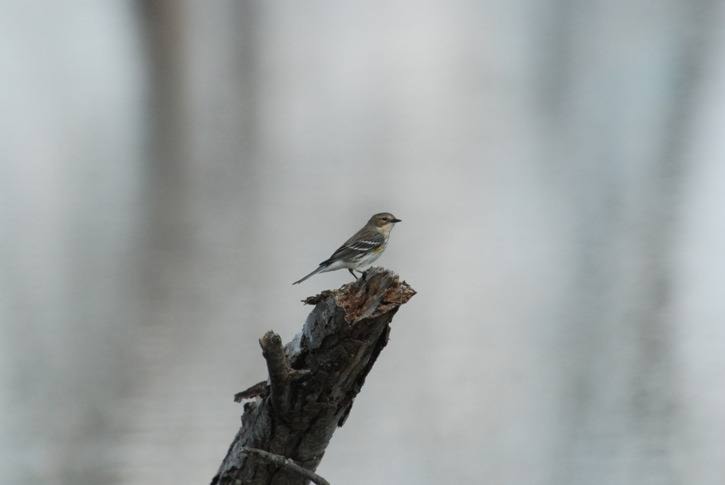I went for a walk around Nakusp last week and found a few surprises. At this time of year, it is not surprising to see large flocks of Bohemian Waxwings. They breed in northern B.C. and the Yukon and move south in the winter. How far they come, and how many come, varies from year to year. Many people don’t realise that these are not the same as the Cedar Waxwings that are here in the summer. They certainly do look very similar, but we very rarely get Cedar Waxwings in winter. So that was my first surprise last week: three Cedar Waxwings sitting in a tree. We did also see a large flock of Bohemians, probably about 250. Cedar Waxwings do not occur in large flocks at any time of year. The Bohemians will remain as long as their favourite food lasts: mountain ash berries. Some years our trees are loaded with berries and the waxwings stay longer; some years there are very few berries and the waxwings just pass right through our region. The crop looks reasonably good this year, so I expect the flocks to stay for several weeks.
Second surprise was a Yellow-rumped Warbler. All warblers are insect eaters, and like most insectivorous birds, they run out of food in the northern winters and must go south. But each year, a few remain somewhere in southern B.C., particularly on the coast where the temperatures are fairly mild. Here in Nakusp I would estimate that I see a Yellow-rumped Warbler in winter about once every five or six years. Of all the warbler species, this seems to be the most hardy of the family and is the most likely to survive a winter in southern B.C. But winter has barely begun, and although this bird is here much later than is normal, it won’t necessarily stay through winter.
My third surprise was another warbler; a Wilson’s Warbler. This colourful little bird is completely yellow with a small black cap. The one I saw last week was on November 29. This is the latest date I have ever seen one in Nakusp. Like the Yellow-rump, I doubt this bird will actually stay through the winter; it’s just a bit late in getting going!
There is one other unusual bird in town at the moment, although I didn’t see it last week: a Blue Jay. This a “real” Blue Jay, not the familiar Steller’s Jay that is quite regular in our region. Steller’s Jays are often referred to as blue jays. They are jays, and they are blue, but they are not Blue Jays! Blue Jays are pale blue and white; Steller’s Jays are dark blue and black. Historically, Blue Jays only occurred east of the Rockies. But in the last 30-40 years they have made inroads into the west. They are now breeding in Cranbrook, Kimberley, Creston and probably Castlegar. Here in Naksup, however, I have only seen them in the fall and winter. This one has been in town for about 6 weeks, so there is every chance it may decide to remain through the winter.
